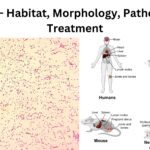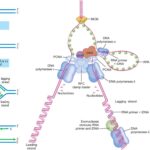IB Biology 23 Views 1 Answers
Sourav PanLv 9November 9, 2024
How can data from experiments with aphid stylets and radioactively-labelled carbon dioxide help analyze phloem transport rates?
How can data from experiments with aphid stylets and radioactively-labelled carbon dioxide help analyze phloem transport rates?
Please login to save the post
Please login to submit an answer.
Sourav PanLv 9May 15, 2025
Data from experiments using aphid stylets and radioactively labeled carbon dioxide (CO₂) can provide valuable insights into phloem transport rates in plants. Here’s how these methods work and their significance:
1. Use of Aphid Stylets
- Feeding Mechanism: Aphids possess specialized mouthparts called stylets, which they use to penetrate the phloem and extract sap. When an aphid inserts its stylet into a sieve tube, it can access the phloem sap directly, which is rich in sugars and other organic compounds.
- Severing the Stylet: If the aphid’s stylet is severed while it is feeding, sap continues to flow from the plant due to the hydrostatic pressure within the sieve tubes. This allows researchers to collect phloem sap at various points along the plant stem without interrupting the flow.
- Measurement of Flow Rates: By placing aphids at different locations on a plant and severing their stylets, researchers can measure the rate at which sap flows out. The amount of sap collected over time can be used to calculate transport rates, providing a direct measurement of phloem function.
2. Radioactively Labeled Carbon Dioxide
- Photosynthesis Incorporation: When plants are exposed to radioactively labeled CO₂, they incorporate this isotope into sugars during photosynthesis. The resulting sugars are then transported through the phloem.
- Detection of Radioactive Sugars: After allowing time for the radioactive sugars to move through the plant, researchers can analyze sap collected from aphid stylets for the presence of radioisotopes. This analysis shows where and how quickly these labeled compounds travel within the phloem.
3. Analyzing Transport Rates
- Timing Measurements: By measuring how long it takes for radioactively labeled sugars to appear in the sap collected from aphid stylets at various distances from the source (where photosynthesis occurs), researchers can calculate the rate of phloem transport. For example, if radioactive sugars are detected at a certain distance after a specific time period, this data can be used to estimate the speed of transport along the phloem.
- Understanding Factors Affecting Transport: The data obtained can also help analyze factors that influence phloem transport rates, such as:
- Concentration of dissolved sugars (which affects osmotic pressure).
- Environmental conditions (light intensity, temperature) that influence photosynthesis.
- Plant physiological responses (e.g., transpiration rates).
0
0 likes
- Share on Facebook
- Share on Twitter
- Share on LinkedIn
0 found this helpful out of 0 votes
Helpful: 0%
Helpful: 0%
Was this page helpful?




